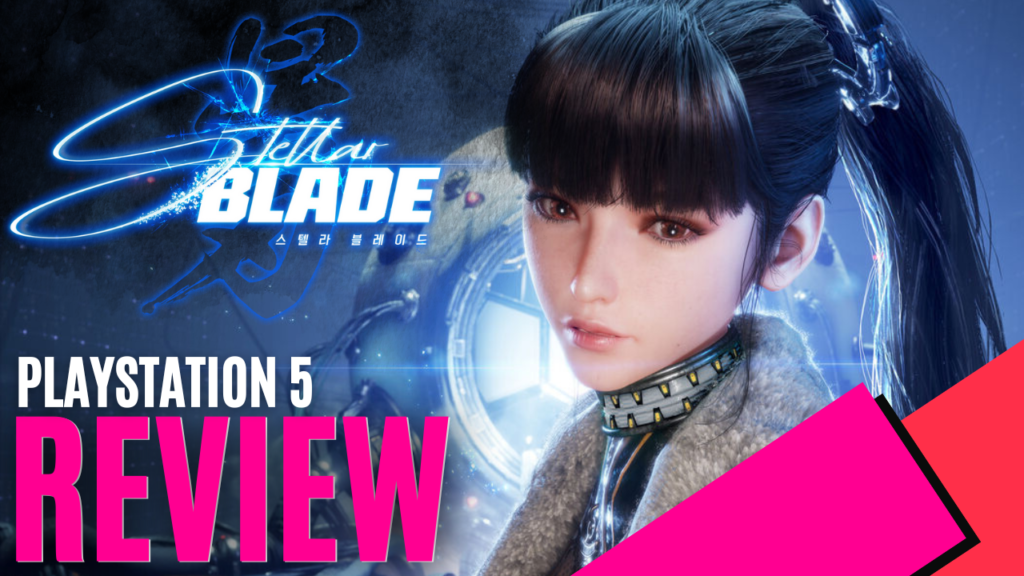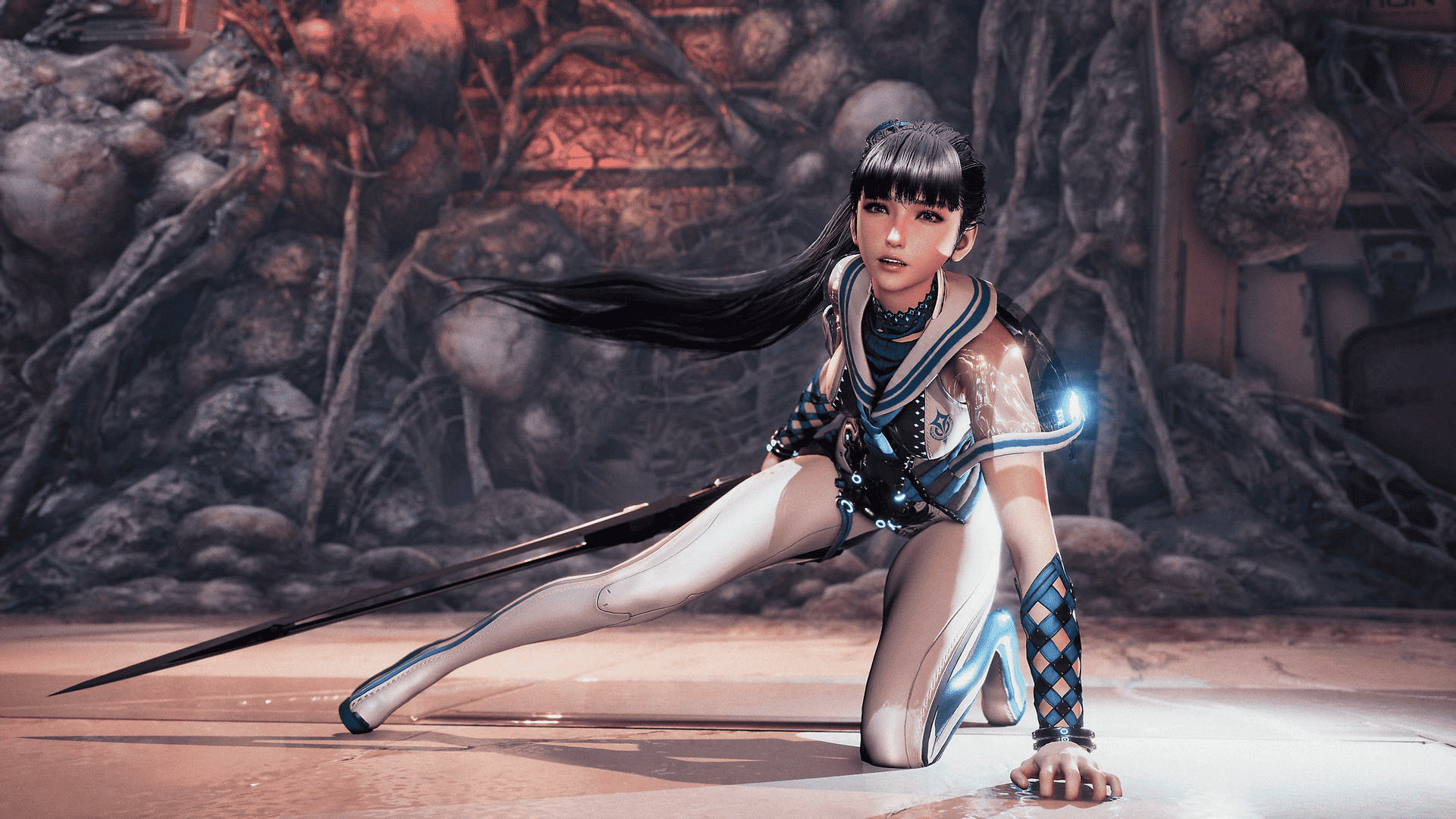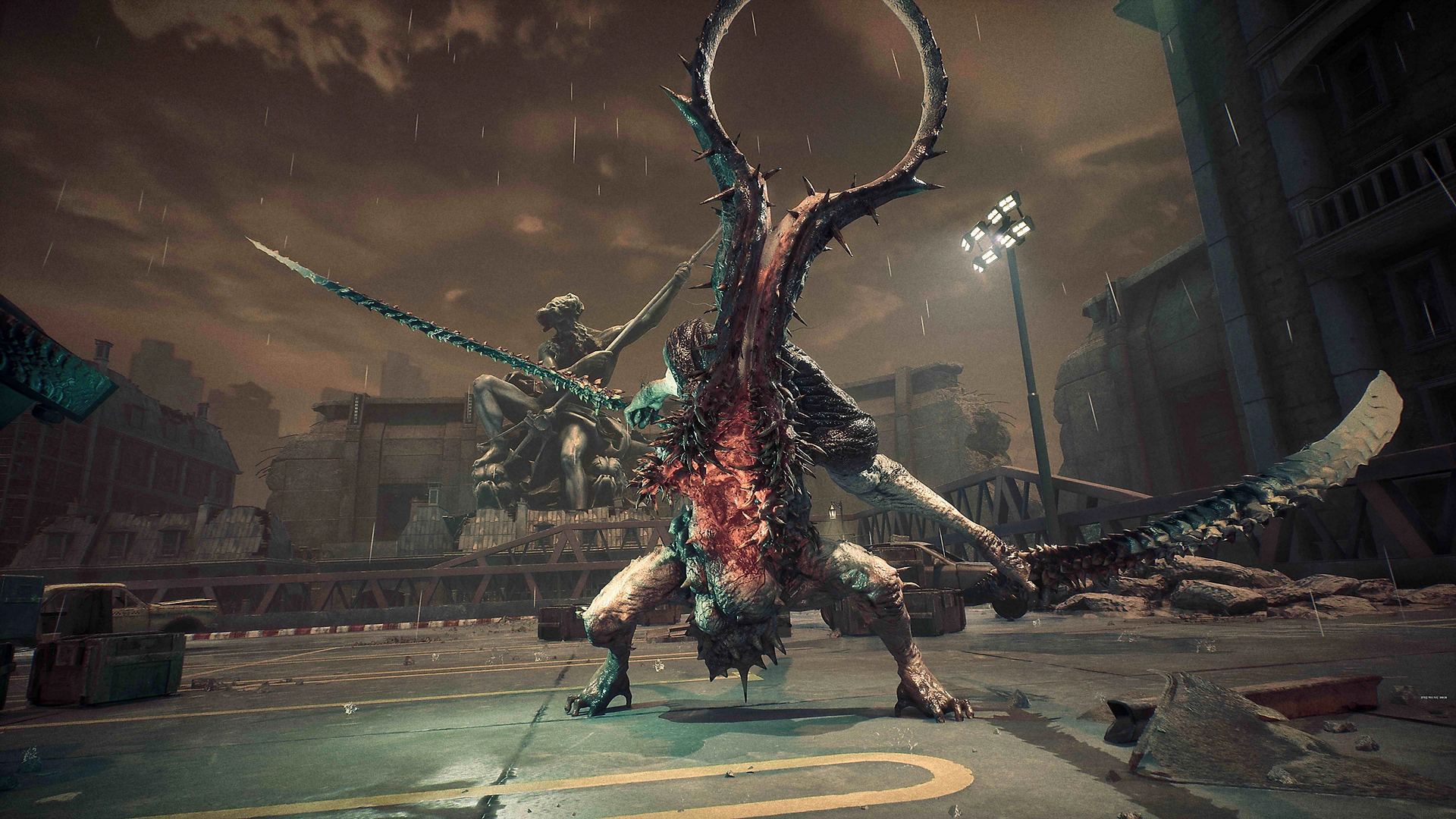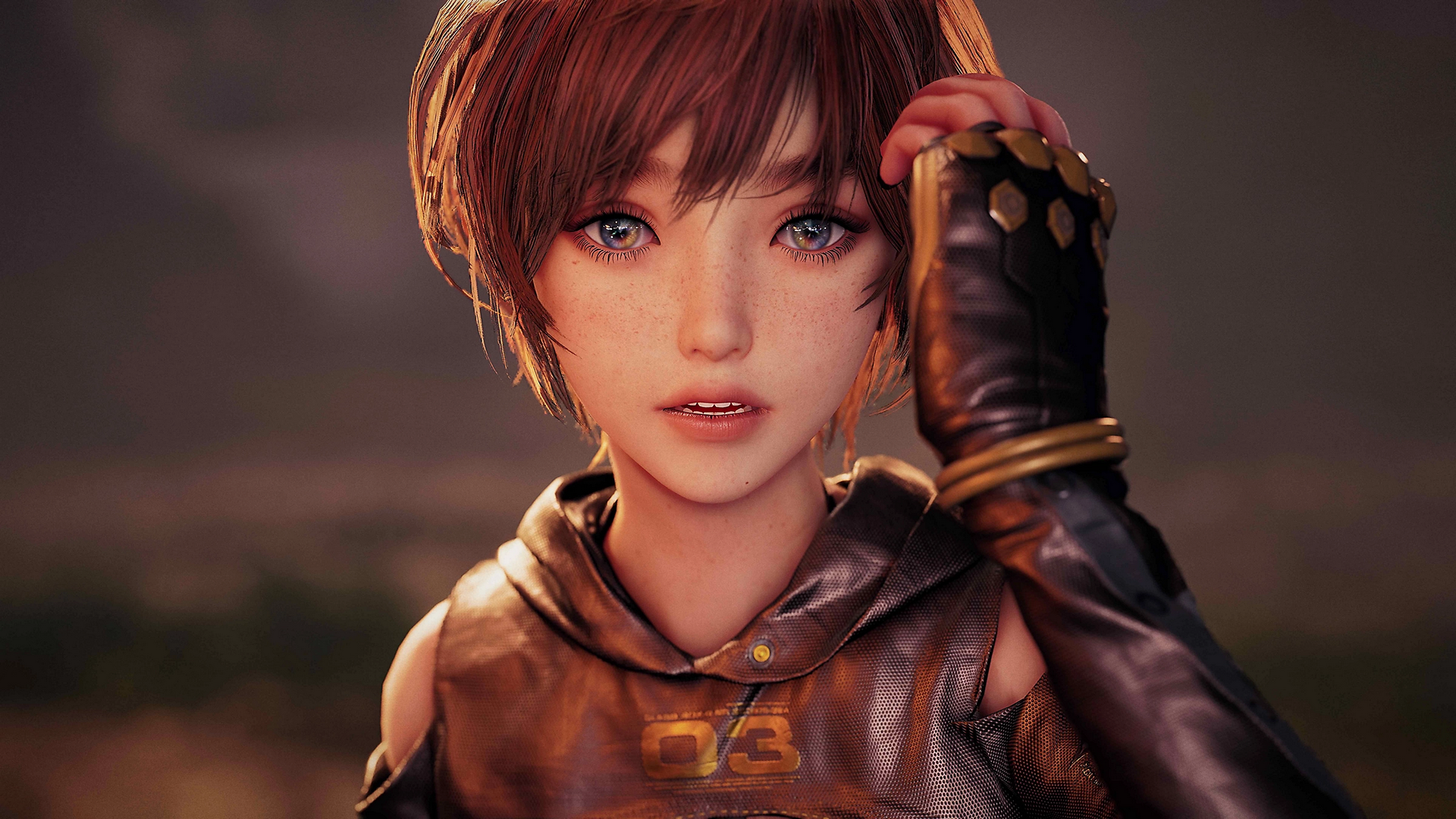
Action, adventure, and a kickass female protagonist are a few of my favourite things. Korean devs, SHIFT UP, know what’s good, and they show it with their new action RPG title ‘Stellar Blade’, releasing exclusively on the PlayStation 5.
EVE, a 7th Airborne Squad member residing in an off-world colony enhanced to withstand even the most challenging conditions, ascends from the “heavens” to save humanity. EVE’s squad’s mission is to eradicate the Naytiba, grotesque horrors that appear to have wiped out most of the remaining humans. Very quickly the mission takes a turn for the worst. Luckily, with the help of new allies, Adam and Lily, EVE’s ready to take on whatever the Naytiba hurl at her, whether it be arms, projectiles or body parts.
It wasn’t love at first contact, however, for me. The early hours of the game in the area, Eidos 7, left little impression. As a very extended tutorial, EVE runs a linear path, hacking and slashing through various enemies. While it does a decent job explaining the basics, there’s a big learning curve to approaching gameplay. Generally, in this kind of hack-and-slash combat style, I operate under the assumption that I can dodge without taking damage or at least minimally.
In Stellar Blade, I quickly learned that there are virtually no invincibility frames (iframes) for dodging; essentially, a sweeping attack can still hit, doing significant damage, rendering many typical dodging situations useless unless it’s to traverse slightly further away.
In hindsight, the emphasis on ‘Perfect Dodging’, which can happen by dodging at the exact moment a Naytiba swings a limb and/or weapon, is critical. Stellar Blade’s real focus, from my experience, is on the ‘Perfect Parry’ to deflect hits and knock enemies off balance before delivering a swift blow with EVE’s trusty blade, Blood Edge. The information-overloaded tutorial made the first area surprisingly tricky, especially the first boss, Abbadon.

There are a few skills in the skill tree that I wish were automatically unlocked at the start of the game including the incredibly useful, Blink, a dodge that results in a phase shift and counter. Just this alone would have a massive difference during my experience in the early stages when surrounded by multiple enemies. From my experience, I can safely say learning to play is all based on patience and perseverance.
It wasn’t until I reached the hub area, Xion, humanity’s last bastion, that I felt the heart of Stellar Blade. Here, EVE’s, or as the locals like to call her, “Angel”, adventure really begins. The semi-open world that’s both sci-fi and post-apocalyptic, is stunning, with fully detailed regions and awesome friendly and enemy character designs. Every inch is covered with a thought, making exploring every nook and cranny intriguing.
There are many zones to explore, including barren wastelands, overgrown city ruins, and spooky underground tunnels. Side quests are straightforward and interesting and were super easy to hand in, with a prompt to return to the quest giver, saving me plenty of time in a pinch.
Additionally, there are plenty of shinies to be found. These said shinies include currencies and crafting components to craft various upgrades to gear, including Exospines, which offer EVE additional power boosts. As a nice bonus, as of writing, there are no microtransactions; everything can be obtained with in-game currency, which is excellent since there’s a plethora of outfits for EVE to choose from, from a sleek sci-fi exosuit to a much more subdued sweater dress.
Overall, the combat experience of Stellar Blade is immensely satisfying once mastered. Gaining skill points (SP) is a breeze, all earned going through the motions of fighting and exploration, so there’s no slog to gain more skills, which is excellent since the 5 types of skill trees introduce so many abilities I wanted to unlock as soon as possible.

There are roughly 64 enemy types, unique attacks and appearances, all as grotesque as each other. One of the spookiest things I came across was a headcrab-type scenario involving a parasitic Naytiba and any corpse it could find lying around. With a vast arsenal of skills, including Beta skills, sweeping combos, ranged attacks and an ultimate that can turn the tides of battle, combat is immensely satisfying.
I tested out my mettle on both difficulties, Story and Normal, and early on, I really struggled with Normal with my relatively poor reaction time. I got my revenge with time, practice and a way better loadout of skills and upgrades. Surprisingly, story mode can also be spicy in some circumstances but with an option to enable Action Assist, players can be prompted to perform a Perfect Dodge, Guard or Parry at the ideal moment. Overall, combat comes down to pattern recognition and adjusting tactics when necessary. Camps are plentiful and scattered throughout each zone.
EVE can recover, upgrade or craft gear, replenish supplies, and fast travel. It’s easy to find a place to take a break and get around the zones without having to run far to any given waypoint.
Accessibility options are quite limited, with options for adjusting for motion sickness and colour blindness. Otherwise, pretty stock standard visual, gameplay and audio adjustments. With the base settings, I was incredibly frustrated with the camera during combat and while interacting in the world, with some prompts only coming up once, aiming at one particular spot on the screen, which is easier said than done on DualShock sticks.
This also played into general movement worldwide and platforming, which is plentiful, resulting in a lot of irritating climbing attempts. Adjusting sensitivities of standard horizontal and vertical sensitivities and aim sensitivity was one of the main contributors to enjoying Stellar Blade; with these fixes, all gameplay elements were more manageable; I highly recommend adjusting sensitivities as soon as possible.
I had virtually no framerate drops, and the game looked great throughout. There was a slight loading delay between areas and cutscenes, which was a few milliseconds more than what I expected of PlayStation 5 games, but this is a minor detail.

There are a lot of controls, but they are mostly along the usual lines with some button combos thrown in; Stellar Blade utilises the PlayStation 5 DualSense well. There are times when the controller plays a crucial role in puzzles, and vibrational feedback can also indicate certain secrets.
Audio design, music and sound effects are glorious; the slash of EVE’s blade as it eviscerates enemies, the impactful gunshots and gurgle of Naytiba. The music is magnificent, ranging from low-key, beautifully sung tracks to more poppy, upbeat numbers and the crowning glory, boss battle music. It’s usually a hybrid of orchestral, some techno and a good serving of drum and bass perfect to pump up for a tough fight.
The English voice acting took some getting used to, with EVE having a prim and proper British accent and some character’s acting and dialogue felt a bit stiff. I played most of the game in Korean, which just felt like the right way to experience the game, the Korean voice talent was impeccable.
As an ending note, it’s hard not to draw comparisons to the director, Hyung-Tae Kim’s, main inspiration, the incredible, and one of my favourite games of all time, ‘NieR: Automata’. Yoko Taro, the game director of NieR: Automata, stated that Stellar Blade is “much better” than NieR. I would say close to being on par with it. Stellar Blade stands on its own, with gameplay that distinguishes itself as a true contender for one of the best games of 2024 so far. If you like NieR: Automata, you’ll probably enjoy what Stellar Blade brings, a similar game feel with a completely different approach.
Stellar Blade is a stellar action RPG that got me addicted the more time I spent with it. This one is for those who love challenging combat and thorough exploration. Action, adventure and EVE: the powerful, pretty, and ponytailed protagonist is the ideal formula for a great game.

The Good
- Varied satisfying gameplay including hack-and-slash combat, puzzles and shooter sections
- Huge range of unlockable skills
- Gorgeous visuals and music
- Heaps of gear, upgrades and cosmetics
The Bad
- Opening hours of gameplay are underwhelming
- Platforming and prompt interactions can be finicky
- Mechanics heavy, can be a learning curve
- Minimal accessibility options








